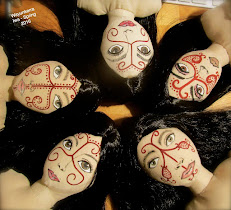1. Situation review
On Colombus Day (Día de la Raza in Latin America[1]), nearly 9.000 indigenous people gathered in Cauca department for a national meeting (Minga Nacional de Resistencia Indígena) in the village of La María, municipality of Piendamó in order to claim for respect for their rights and ask for protection, following a series of homicides and threats against their leaders in the last months. They also claim for a solution for their land tenancy situation. The protesters are currently being repelled by military and Police forces along the Panamerican road (one of the country’s main roads between
According to ICRC, on October 15, the anti-disturbances mobile squad of the Army broke into the area of permanent assembly, where the indigenous population is gathered, allegedly burning the community’s assets and harassing protesters with weapons and gases.
According to press sources, the Panamerican road is under the Army’s control.
2. Impact
According to the Indigenous Authorities of Northern Cauca, clashes between the Armed Forces and the protesters leave, so far, 40 people injured (one of them underage) and three indigenous leaders under arrest. 3 indigenous persons would have died, however this information has not been confirmed yet. Indigenous organizations of the region also reported that the access of medical mission from the local hospital is being restricted by the militaries.
Yesterday (October 14), the National Indigenous Organization (ONIC) issued a communiqué whereby they denounce the use of firearms and other weapons by the Armed Forces against the protesters; they also warn on the possible consequences of this situation and demand protection and prevention measures in order to respect their rights. Also, ACIN requested the
Press sources reported on October 15 new disturbances in Candelaria (Valle del Cauca department), where clashes between protesters and the Police allegedly ended with one Police agent retained.
Other indigenous mobilizations are taking place in Caldas, Risaralda, Chocó and Boyacá departments.
3. National Response
The Government of Cauca department is promoting a Dialogue Commission in order to assess the situation and set agreements with the indigenous leaders.
The Ombudsman’s Office is attending the meetings of the Dialogue Commission and arrived in the area together with Minga.
ACIN and CRIC are providing health assistance for the injured, through their health network.
More than 50 social organizations sustained a meeting gathered in Popayán in order to support the indigenous communities.
Indigenous and peasant organizations of the region are in the area accompanying the population and monitoring the situation; they also warned national and local authorities on the recent events.
- International Response
Following a formal request for support from indigenous organizations, UN Agencies, Embassies and representatives of indigenous community in Bogotá held a meeting where the following recommendations were made: i) fact-finding mission to the area (ongoing); ii) Explore the possibility of the development of a high-level mission in order to mediate between the parties; iii) issue a public communiqué on the situation; iv) establishment of a working group to address durable solutions to overcome the situation.
After a request made by the indigenous organizations, Diakonie provided 100 first aid kits to provide assistance for the injured, which were delivered by the Ombudsman’s Office to the area where the permanent assembly is taking place.
UNHCHR met with the Police at the national level, in order to assess and discuss the use of weapons against the protesters.
PAHO is advocating at the local level for the access of the medical mission to the area in order to assist the injured persons.
UNDSS, UNHCHR, UNHCR Diakonie and OCHA are currently undertaking a joint mission to the area.
[1] For the indigenous population in








No hay comentarios:
Publicar un comentario
Tus preguntas, sugerencias, comentarios y opiniones sobre esta entrada y el contenido que publicamos en el NotiWayuu.blogspot.com, son importantes para nosotras y nosotros. Escríbenos a la Redacción del NotiWayuu, incluso si quieres que contemos tus historias.